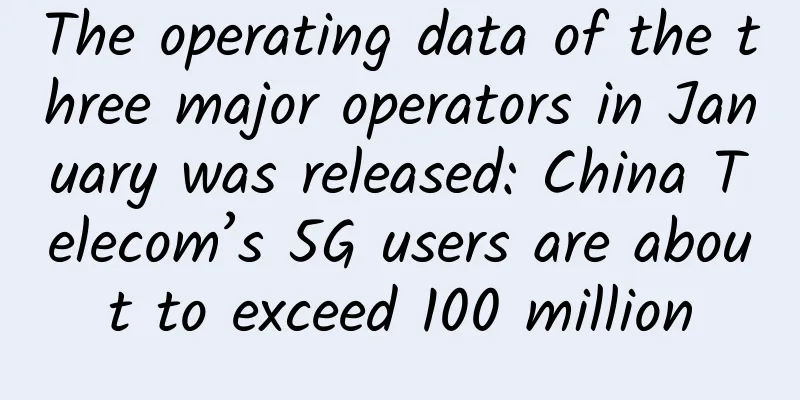Huawei launches star products and industry cooperation plans for the F5G era in the enterprise sector

|
On August 5, the "F5G Era Huawei Enterprise Optical Network Flagship Product Launch Conference" was successfully held in Guangzhou. Jin Yuzhi, President of Huawei's Transmission and Access Product Line, interpreted the fifth-generation fixed communication network F5G for the first time in the enterprise field, and released the industry's first F5G-enabled industrial-grade intelligent optical terminal (Huawei Starlight Series Tianji T863E), as well as the next-generation hard pipe technology Liquid OTN, bringing innovative network experience to industrial production and accelerating the digital transformation of enterprises. At the same time, Huawei and its industry partners launched the "Starlight Plan", proposing to invest 2.5 billion yuan in the construction of the all-optical industry ecosystem in the next five years to create a 100 billion-scale industry growth space.
Jin Yuzhi, President of Huawei's Transmission and Access Product Line, delivered a keynote speech F5G builds the foundation of new infrastructure F5G is the fifth generation of fixed network technology, also known as F5G all-optical network. Similar to 5G, it is a new generation of communication standards proposed by the International Standards Organization for industrial Internet application scenarios. 5G and F5G complement each other and play an irreplaceable role in different business scenarios. 5G is suitable for scenarios with mobility and multiple connections, such as drones and Internet of Vehicles, while F5G is suitable for fixed, large bandwidth, low latency and high security scenarios, such as industrial Internet, data center interconnection and enterprise parks. From F1G to F4G, fixed networks not only bring new ways of communication and entertainment to families, but also improve corporate office and management efficiency through informatization, causing a revolution in office methods. At present, we are entering the digital age. Together with F5G, 5G will revolutionize production methods by enabling industrial Internet. In the F5G era, all-optical networks will further broaden the boundaries of connectivity, extending from home networks to enterprise networks and production networks, and building high-quality network infrastructure for enterprise digital transformation. Jin Yuzhi proposed that the new infrastructure consists of three parts: new connections, new computing and new applications. They jointly support the development of the country's digital economy from the bottom up. Based on the forecast of the book "New Infrastructure": the investment in new connections in 2020 is 740 billion yuan, and the investment in new infrastructure is 1.7 trillion yuan, leveraging 35.8 trillion yuan of GDP growth. The new connection is the communication network in the usual sense, including 5G, F5G and the Internet of Things. In April this year, the National Development and Reform Commission also clearly included F5G in the core content of the new infrastructure: accelerating the deployment of 5G networks and promoting the optimization and upgrading of fiber-optic broadband networks. “F5G+X” accelerates digital transformation in thousands of industries Jin Yuzhi said that for the enterprise market, F5G is based on optical fiber communication technology and has the characteristics of ultra-large bandwidth, security, reliability, deterministic low latency, etc. Huawei will focus on the four major business scenarios of "industrial optical network, all-optical bearer, all-optical data center, and all-optical park" to create value for more and more industries. Specifically: F5G+ Mine: Mine safety is closely related to people's life safety, so it is necessary to avoid using electrical equipment in mines as much as possible to avoid gas explosions caused by sparks, etc. The industrial optical network solution is adopted, and passive optical devices replace active aggregation switches, simplifying the network architecture; reducing the use of active equipment, while reducing the number of explosion-proof boxes by 40%, improving the safety of mines. F5G+Power: The relay protection technology commonly used in power systems and the fiber-optic communication link based on hard pipe technology can achieve a two-way deterministic low latency of less than 5 milliseconds, ensuring that relay protection takes effect in a timely manner, avoiding fault transmission, and ensuring power safety. F5G+Government Affairs: One of the biggest challenges in building a government cloud is to centralize data distributed in different departments and maximize the value of big data. With the OTN all-optical network construction solution, the backbone bandwidth can reach up to 88T. At the same time, the application of optical slicing technology ensures the physical isolation between business departments. Ultimately, all businesses can be carried on one network, saving government investment. F5G+Finance: Data loss and business interruption have a huge impact on financial business and will directly translate into economic losses. For this reason, most banks have built active-active data centers. Using wavelength division technology for data center interconnection can not only provide large bandwidth, but also ensure that the latency is less than 1 millisecond per 100 kilometers, achieving an RTO of 0, and reducing data loss and business interruption time to a minimum. F5G+ Enterprise Campus: Traditional enterprise campus networks are built based on switches, and usually require a weak current room on each floor. All-optical campus networks use small, light, and power-free passive optical devices to replace aggregation switches, reducing 80% of weak current rooms. "In the F5G era, in order to meet the challenges faced by enterprises in digital transformation, Huawei released the Intelligent All-Optical Network strategy last year. Today, we will grandly launch new products and solutions for the Intelligent All-Optical Network: the industry's first F5G-enabled industrial-grade intelligent optical terminal (Huawei Starlight Series Tianji T863E), as well as the next-generation hard pipe technology Liquid OTN, to better serve industries such as mining, electricity, manufacturing, and oil and gas," said Jin Yuzhi. 2.5 billion in 5 years, "Starlight Project" creates F5G all-optical ecosystem Huawei predicts that in the next five years, F5G will bring at least 100 billion yuan of industrial investment space, benefiting various industries such as government affairs, electricity, transportation, education, manufacturing, and finance, and stimulating a new round of economic growth. Under the new trend, only by seizing the opportunity of F5G to achieve network upgrade and transformation can we become the winner in the wave of digitalization.
Huawei launches the "Starlight Project" to jointly create an all-optical industry ecosystem Huawei and its industry partners jointly launched the "Starlight Plan", investing 2.5 billion in five years to develop the optical industry ecosystem. Jin Yuzhi said: "Huawei adheres to the customer-centric culture and has long invested in basic science and technological innovation in the optical industry. Looking to the future, we are willing to continue to bring F5G technology, industry digital transformation solutions and ecological concepts to more customers and partners, and accelerate the pace of social digital transformation!" To date, Huawei's all-optical campus, all-optical transport and all-optical data center solutions have served more than 3,800 customers in 158 countries and regions. To learn more about Huawei's intelligent all-optical network solutions, please visit: https://e.huawei.com/cn/solutions/enterprise-transmission-access |
<<: 5G applications are flourishing, and standard construction regulates industry development
Recommend
The Ministry of Industry and Information Technology has released a number of new 5G standards, covering core networks, slicing, 5G messaging, etc.
Recently, the Ministry of Industry and Informatio...
AkkoCloud newly launched CN2 GIA line in London, UK, with annual payment starting from 299 yuan and 10% discount for monthly payment
AkkoCloud sent new product information. This mont...
Edge computing in 5G
01/ Introduction Edge computing is a computing pa...
Ministry of Industry and Information Technology: There are more than 1,500 "5G+Industrial Internet" projects nationwide
[[402918]] Recently, the Ministry of Industry and...
Rethinking the future of 5G through the lens of extended reality (XR)
5G technology is developing globally, and Singapo...
5 Advantages of Edge Computing in Enterprise Network Strategy
Edge computing has quickly become popular for com...
GTI releases 2.3GHz spectrum industry joint statement
As 5G accelerates globalization, it will unlock u...
The core technical principles behind DingTalk document collaborative editing
Some people say that the most profound change tha...
How does the computing power network work?
In the previous articles, I gave you a detailed i...
5G technology has just emerged, so don’t rush to pour cold water on it
After 3G and 4G have successively gone from unfam...
PacificRack: $12/year KVM-1GB/20GB/2TB/Los Angeles Data Center
PacificRack is a domain name under QN Data Center...
Wi-Fi 7 is on the way, is there a market for Wi-Fi 6E in China?
On January 7, US time, the Wi-Fi Alliance launche...
Yecao Cloud New Year Special Offer, Hong Kong VPS Annual Payment 36% Off, Starting from 136 Yuan in the First Year
Sharing some information about Chinese VPS mercha...
IEEE technical white paper officially released, lossless network research enters a new stage
Recently, the "IEEE 802 Nendica Report: The ...









